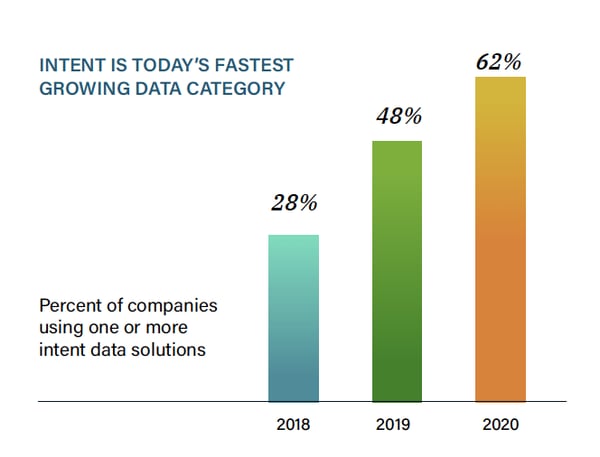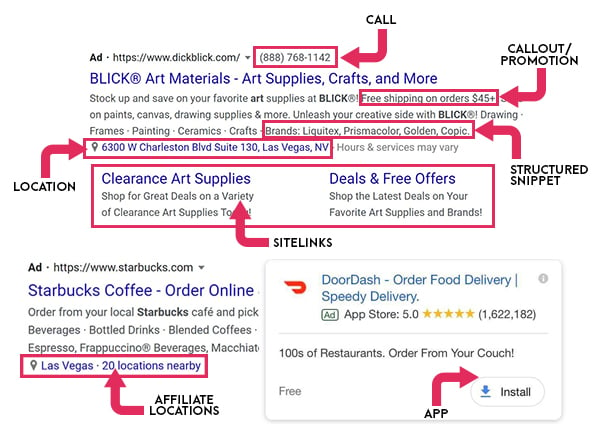Targeting Right B2B Prospects: Methods for Identifying User Intent, Case Studies
Our last article dived deep into intent-based marketing — the types of intent signals, Identifying user intent, and data tracking strategies – and evaluated their performance (KPIs) using AI-automated outreach methods.
In today’s post, we will explore various methods for identifying the ideal customer profiles (ICP) and the right prospects to target so that instead of trying to generate more leads to satisfy sales quotas, intent-driven targeting can improve sales enablement and make it easier to close deals.
- Collecting Prospects’ Intent (Data) Is Not Straightforward – Technical Challenges
- Process for Identifying a Potential Prospect Through intent-data
- Identifying Intent Data From ‘Websites’
- Case Study: Marriott Increased Bookings by 289% Using First-Party Website Data
- Identifying Intent Data from ‘Email Campaigns’
- Identifying Intent Data from ‘Social Media’
- Identifying Intent Data from ‘Landing Pages’
- Identifying Intent Data from ‘Ads’
- Identifying User Intent from Competitor Platforms

The Need to Identify Intent?
One of the most complex parts of being a marketing/salesperson in the digital B2B space is knowing when and how to target specific prospects. Marketers often feel like they are wasting their time with their outreach activity by guesswork.
With intent data, instead of guessing whether to target the prospect or what outreach method could better resonate with the prospect, marketers can categorise passive and active prospects and target them with an educated conversation based on information the buyer is actively looking for and address their specific needs for better conversion.
“Stat: 55% of sales leaders saw increased lead conversions when using intent data.”
This article aims to present you with methods that will help you understand a prospective Client’s interests and help marketers personalise their outreach to specific groups of buyers instead of the entire account book.
Collecting Prospects’ Intent (Data) Is Not Straightforward – Technical Challenges
- Over-Abundance of Prospects Data: Due to the sheer volume of data types available across millions of companies (as potential prospects), one can be deluged with intent data from various streams, making it difficult to determine the right level of coverage and data types needed.
- Outdated Intent Data: Reaching out to prospects who have already made a purchase decision wastes valuable sales time and resources. As prospects quickly move through the buying journey, intent data that is even a week old can become irrelevant and misleading.
- Inaccurate or Misleading Data: Distinguishing between strong intent signals (e.g. a CTO researching a specific product) and weak signals (e.g. an intern Googling the company name) is crucial to avoid wasting time on unqualified leads. Third-party intent data sources can include errors, such as outdated or misattributed intent signals.
- Over-reliance on online intent: Intent data derived solely from online behaviours can provide an incomplete picture, as it fails to capture the influence of offline interactions and human conversations on the buying process.
The challenge is how marketers can address these issues and build effective intent-data collection streams to extract meaningful ROI from an outreach campaign.
Process for Identifying a Potential Prospect Through intent-data
The first stage in an Intent-data marketing outreach (adjacent flowchart) is ” identifying” the right prospects.
This involves (Collecting intent data, Refine and filtering, and Enrich the data):
Step-1: Collect first-party intent data from various data streams, such as website, email campaigns, landing pages, ads, search engines, and social media pages.
Step-2: Prioritise engagement metrics and refine the data for active purchase intent.
Step-3: Filter the identified accounts to only those that match the ICP using firmographic and technographic data.
Step-4: Leverage Third-party data to supplement first-party data to get a more comprehensive view of prospect interest. Various tools track intent signals across the web.
These four steps form the foundation for an effective intent-outreach campaign. In the following sections, let us explore the methods and tools available for intent data collection (First-party and third-party) with case studies mentioning how user intent can be recorded, refined, and targeted.
Collecting First-party Intent-data: Methods and Tools
First-party intent data offers insights into your prospects’ interests, behaviours, and buying signals.
Depending on the data stream, the type of intent data collected shall vary. Here are a few examples of the kinds of data and techniques used to collect purchase intent from websites, email campaigns, landing pages, social media sites, and capturing intent data from ads.
A. Identifying Intent Data From ‘Websites’:
- Data Types: Site analytics (GA4), site search, organic traffic, content engagement, and behavioural tracking (heat maps).
- Tools Available:
– Google Analytics (GA4): Tracks user interactions, providing insights into page views, session duration, and conversion paths.
– Hotjar: Offers heatmaps and session recordings to visualise user behaviour.
– Crazy Egg: Provides A/B testing and scroll maps to optimise engagement.
Identifying Intent Data from First-party Website Data – Case Study:
Marriott Increased Bookings by 289% Using First-Party Website Data
Marriott International traditionally faced inefficiencies in identifying potential clients from their website visitors and was dependent on generic retargeting methods, resulting in high costs and low conversion rates. They partnered with The Trade Desk and Digitas to implement Dynamic Creative Optimization (DCO) and Universal Pixels to track user behaviour and intent to address this.
When deployed on Marriott’s website, Universal Pixel started collecting first-party data from website visitors, tracking their behaviours and interactions — browsing habits, purchase histories, and other behaviours. Leveraging pixel data, re-targeted ad campaigns were automated based on traveller location, language, and preferences, enabling real-time assembly of targeted advertisements and enhancing precision marketing efforts.
The strategic use of first-party data resulted in a 289% increase in Marriott bookings. They could achieve a 55% reduction in cost per acquisition, with an impressive 65% increase in return on ad spend. Marriott also expanded its audience reach by 272%, reducing the average booking completion time from 8 to 5 days.
Note: While the above case study leverages complex technologies to build robust automated intent identification and behaviour-tracking systems, these platforms are often resource-intensive and can only yield accurate results for sites with significant visitor traffic. LeadRebel.io simplifies the process with a few clicks.
Check how it works here: User-Friendly Website Visitor Tracking Software – Leadrebel.io. Or check the list of tools for website visitor recognition.
For websites with low to medium traffic, LeadRebl.io is best suited to manually collect First-party data and derive user intent. Read more: Intent-based Marketing – Case Studies and Effective Strategies (leadrebel.io)
B. Identifying Intent Data from ‘Email Campaigns’
Data Types: Tracking CTRs, events (downloads, form fills, or clicks), and email cadence or responsiveness.
Tools Available:
- Mailchimp: Offers advanced segmentation and automation, with a reported average open rate of 21.33% across industries.
- HubSpot: Provides comprehensive analytics on email performance, including click rates and user engagement metrics.
- Marketo: Enables detailed tracking of email interactions and lead scoring.

Image reference: https://www.clicdata.com/dashboards/hubspot-email-marketing-performance/
Tracking Intent Data from Email Campaigns – Example Case Study:
The goal is to improve prospecting and targeting by leveraging email campaign data to identify high-intent prospects for LeadRebel.io, a B2B lead-sourcing platform.
- Deploy ‘BuiltWith’ to find potential prospective clients for LeadRebel.io (websites using competitor products). Once the prospect’s website list is ready, use ‘Hunter.io’ to scrape and extract their email lists and segment them into groups (based on industry, Saas, etc.)
- HubSpot: Launch an email cold outreach campaign to monitor key metrics such as link CTRs (Click-through rates), Form fills, Download events, or Open and response rates.
- Market-Average Intent signals: The average email open rate for the “Software and Web App” industry category is 39.77% according to benchmarks (Check this HubSpot report for average opening rates across industries: Average Email Open Rates by Industry). Higher response rates indicate a more substantial interest; for example, a follow-up email response rate of 10% is considered good in B2B.
- Classify users based on intent signals: High-intent prospects open emails and engage promptly, while moderate and low-intent prospects may exhibit lukewarm engagement. These include clicking on links (tracked through CTRs). Check the MailerLite report for average CTR for your industry, and classify prospects with high intent signals.

Image reference: Marketo Email Performance Insights dashboard
- Resources, Personalized offers and free trials for High-intent prospects: The goal is to move high-intent prospects down the funnel from Consideration to Conversion. This can be through additional resources — free product demos, a trial, webinars, and industry reports.
- Re-engage with Moderate-Intent users: These prospects must be nurtured through special discounts, surveys, or an incentive program. By consistently tracking their engagement over some time, they can move up the ladder into high-intent prospects.
By leveraging email engagement metrics and tracking a user’s intent, industries can identify and avoid sales efforts on low-intent prospects while doubling their targeting and prospecting efforts on high-intent prospects.
C. Identifying Intent Data from ‘Social Media’
Data Types: Social listening tools, engagement metrics, and conversion events.
Tools Available:
- Hootsuite: Ideal for tracking brand mentions and measuring the impact of social media campaigns, Hootsuite monitors social media interactions across various platforms to provide detailed analytics on likes, shares, comments, and other engagement metrics.

Image reference: Sprout Social Campaign dashboard
- Sprout Social: Sprout Social is best suited to understanding audience sentiment and identifying trends in social media discussions. The platform offers advanced social listening features to monitor and analyse conversations around specific topics and provides detailed reporting on social media performance, including engagement rates, follower growth, and audience demographics.
- Brandwatch: Equipped with advanced models, Brandwatch offers sophisticated social listening and sentiment analysis tools by analysing large volumes of social data to identify trends, patterns, and sentiments around brands or topics. Brandwatch is ideal for understanding social media sentiment and competitor benchmarking.
Case Study: ESCP Europe Leveraging LinkedIn’s Spotlight Ads
Spotlight Ads, a dynamic ad format on LinkedIn, is designed to promote content directly to users based on their profile data, activity history, portfolio, job titles, skills, and interest pages. The LinkedIn algorithm identifies the prospect’s intent and automates the targeting, resulting in higher ROIs.
A successful record of utilising LinkedIn Spotlight Ads to identify user intent to identify prospects and then target them resulted in a conversion rate of 14%, double their initial target recorded by HubSpot.

ESCP Europe, the World’s First Business School, aimed to generate applicants for their Masters in European Business. Their secondary goal was to build a global leads pipeline by identifying and engaging prospective students. Here is how they leveraged Spotlight Ads:
- Identifying Target account profiles: Using LinkedIn’s targeting features, ESCP contacted students interested in higher education.
- Demographic Insights: Analyzed the profiles of users who interacted with the ads to understand their backgrounds and interests.
- Targeting profiles with Ad Content: Featured valuable information such as scholarship opportunities to attract high-quality leads.
- Engagement Indicators: Filtered on users who not only clicked on the ads but also engaged with the landing page content, provided their information and marked them as High-interest users.
- Click-Through Rate (CTR): Tracked the CTR to determine the effectiveness of the ads. Spotlight Ads on LinkedIn typically see higher engagement due to their personalised nature.
- Follow-Up Interactions: Nurtured leads through follow-up calls and interviews to convert them into applicants.
Results of ESCP’s intent-driven targeting campaign:
- Impressions: Over 2M+ impressions from potential students.
- Conversion Rate: Achieved nearly 14%, almost double the intended goal of 7%.
- Leads Generated: Exceeded the goal by generating 290 high-quality leads (40 more than targeted).
- Geographic Insights: Identified three countries with the highest qualified leads, adding to their global pipeline development.
D. Identifying Intent Data from ‘Landing Pages’
Data Types: Conversion rates, engagement metrics (time spent on a page, scroll depth, etc), and performance data from A/B testing.
Tools Available:
- Instapage: Heatmaps and detailed visitor analytics to track user engagement.
- Unbounce: Create and test (A/B) landing pages. It also reports an average conversion lift of 30% from optimised pages.
- Leadpages: Offers drag-and-drop customisation and analytics on page performance.
Identifying Intent from ‘Landing Pages’ – Method and Example Case Study:
The goal is to capture High-Intent Leads for an HR and Recruiting Services Company.
- Search Job Search Platforms to identify companies recruiting employees: Platforms like Indeed and LinkedIn Jobs can help identify companies actively hiring in a specialised field.
- Gather the Company’s HR Contacts (Email IDs): Through web scrapping and social media tools (LinkedIn Sales Navigator), gather HR Managers’ Email IDs. Use Hunter.io to find and verify email addresses.
- Create Optimized Landing Pages: Design landing pages for specific job roles, such as software engineers, data scientists, and UI/UX designers. Use Unbounce or Insapage to create the pages. Test them (A/B) using Unbounce for different headlines, CTAs, and page layouts, aiming for maximum conversion.

Image reference: Key Insights on How to Get More Conversions
- Emails and PPC Ads with Landing Pages: HubSpot data shows “companies do see a 55% increase in leads when increasing their number of landing pages from 10 to 15“. Leveraging this, include landing pages in your emails, lending them your expertise and assistance in finding the right candidate for the job.
- Identify High-Intent Prospects through Engagement Metrics and Behaviour:
– Use Instapage to monitor how visitors interact with the landing pages. Identify sections that get the most attention and those parts causing drop-offs.
– Find how far visitors scroll down the page. If users consistently drop off before reaching the CTA, consider repositioning critical information higher up on the page.
– Find Time Spent on the Page to identify purchase intent. Longer page times indicate higher interest levels.
- CRM integration and Follow-up: CRM tools like HubSpot or Salesforce offer integration with Landing pages to streamline the follow-up of high-intent leads. From the insights gained through engagement metrics, highlight and provide solutions to specific pain points relevant to their behaviour on landing pages.
- Track conversion metrics from Landing pages: Conversion Rate is the percentage of visitors who convert into leads. On average, a campaign is successful if the conversion rate is more than the average of 2.35%.
Tools like Unbounce, Instapage, and Leadpages help track and analyse landing page engagement metrics effectively. With precise Target account profiles and a data-driven strategy, brands can identify high-intent prospects and improve their targeting and follow-up strategies to increase conversion rates and client acquisition.
D. Identifying Intent Data from ‘Ads’
Data Types: Insights on demographics, ad audiences, click-through rate, and CTRs.
Tools Available:
- Google Ads – Ad Extensions (Assets): Google is the Ad market leader and offers enormous data on Ad efficiency. However, Ad Extensions have been proven to help improve ad performance and understand user behaviour/intent (Read more: Google Ads Extensions). Though extensions are primarily used to extend ad real estate to drive more clicks for your PPC campaign, the intent data from such campaigns can yield information on the type of content the audience is looking for, and help address their specific needs.

Image Reference: Maximize Google Ads ROI With Ad Extensions
- Facebook Ads Manager: Allows for detailed targeting and information on user behaviour and interests. The platform also offers insights on demographics, user data, and engagement metrics to help marketers understand the mode of interactions, frequency, and type of content prospects are interested in.
- LinkedIn Campaign Manager and Spotlight Ads: LinkedIn ads are Ideal for identifying B2B prospects based on job titles, industries, and company size. Marketers can find prospects ‘ LinkedIn profiles to check their activity and purchase interests from an existing CRM or BuiltWith data (of profiles classified based on passive/active intent).
These accounts can be targeted according to their purchase intent. For instance, prospects with low engagement recorded from an Email campaign can be targetted with LinkedIn Sponsored content (0.44% average CTR). In comparison, prospects with moderate engagement can be targetted with LinkedIn Text & dynamic ads (0.024% average CTR). Personalised Message ads have recorded a high average CTR of 3.2% for High-intent prospects.
Identifying User Intent from Competitor Platforms
By identifying high-intent prospects already using competitor products, businesses can increase the chances of conversion, demonstrating a strategic use of third-party data to understand and act on user intent.
Here is our list of reference tools available to help gather website data alongside the methods to capture prospects:

Case Study: Finding Prospective Clients for ‘LeadRebel.io’ software
The goal is to identify and target prospects who already use LeadRebel’s competitor tools, implying their active intent to use lead generation tools. Here is how the right prospect is identified and targetted:
- Use BuiltWith: Identify websites using competitors’ tools. For instance, BuiltWith can reveal if a prospect uses Google Analytics, just like 72% of top websites do. Similarly, check websites that use other competitor products – from Finder.io, CoPilot AI, or others.

Image reference: https://builtwith.com/
- Find Prospect Contacts: Utilize LinkedIn Sales Navigator to locate key persons running these websites with competitor tools. Prospects include marketing managers or IT directors to start a personalised outreach.
- Email Campaigns: Design targeted email campaigns marketing ‘Lead Rebel’. Studies show that these targeted, personalised emails can increase open rates by 26%.
- Example Implementation: Finding 500 sites using Google Analytics and contacting their marketing managers, achieving a 10% response rate.

To summarise, mastering intent-based identification methods is pivotal for precise B2B prospect targeting. LeadRebel.io offers an advanced platform that integrates seamlessly into existing workflows for businesses seeking to capture high-intent leads efficiently. Check here: LeadRebel.io

